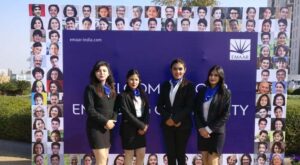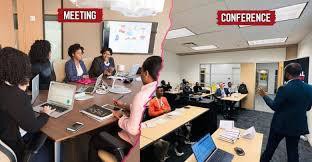MEETINGS & CONFERENCES



Elements of MICE
- types of meeting or conferences
- venue
- participants
- branding
- decorating
- catering
- technology
- manpower
- budgeting
Meetings and Conferences: Overview, Elements, Process, and Costing
1. What are Meetings and Conferences?
Meetings and conferences are structured gatherings designed for discussion, decision-making, networking, or knowledge sharing.

- Meetings are typically smaller, more frequent, and focus on operational or strategic matters within organizations.
- Conferences are larger, more formal events that bring together professionals, experts, or stakeholders to discuss industry trends, innovations, and developments.
2. Key Elements of Meetings and Conferences
Both meetings and conferences consist of several essential components:

- Objective/Purpose: Clear goals and intended outcomes.
- Participants: The attendees, which can range from small teams to large audiences.
- Agenda: A structured list of topics or activities to be covered.
- Venue: The physical or virtual location where the event takes place.
- Technology & Equipment: Audio-visual aids, internet access, and conferencing tools.
- Facilitators/Speakers: Moderators, keynote speakers, or presenters.
- Logistics & Support: Catering, accommodation, registration, and transport arrangements.
3. Process of Organizing Meetings and Conferences
- Planning Stage
- Define objectives and goals.
- Determine the target audience and invite participants.
- Choose a suitable date and venue.
- Develop an agenda and identify speakers.
- Arrange logistics such as accommodation, catering, and transport.
- Promote the event through marketing or internal communication.
- Execution Stage
- Set up the venue and test equipment.
- Register attendees and provide necessary materials.
- Conduct the meeting/conference as per the agenda.
- Ensure smooth communication and coordination among stakeholders.
- Facilitate engagement and interaction through Q&A sessions, networking opportunities, or workshops.
- Post-Event Activities
- Gather feedback from participants.
- Analyze outcomes and assess the success of the event.
- Share minutes, reports, or follow-up actions.
- Review financials and reconcile expenditures.
4. Cost Considerations
The cost of organizing a meeting or conference depends on multiple factors:
- Venue: Rental costs vary based on size, location, and amenities.
- Technology: Costs for A/V equipment, online conferencing platforms, and IT support.
- Catering & Accommodation: Food, beverages, and lodging for attendees.
- Marketing & Promotions: Advertising, printed materials, and digital outreach.
- Speaker & Facilitator Fees: Payment or honorarium for experts.
- Travel & Transport: Costs for guest speakers and participants.
- Miscellaneous Expenses: Permits, insurance, and contingency funds.
Conclusion
Effective planning and execution of meetings and conferences require attention to detail and clear objectives. By understanding their elements, following a structured process, and managing costs efficiently, organizations can ensure productive and successful events.